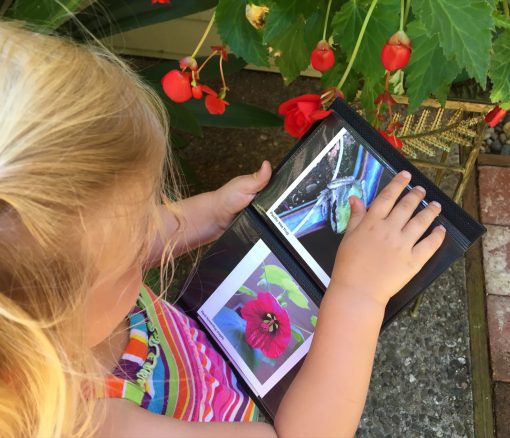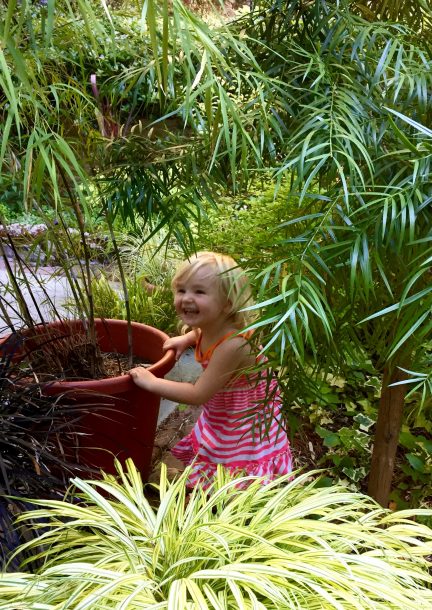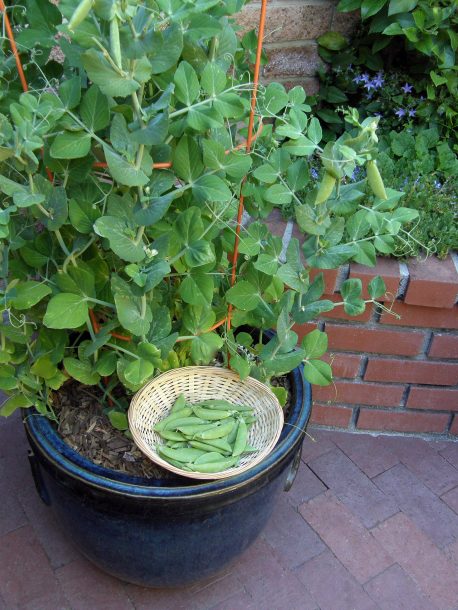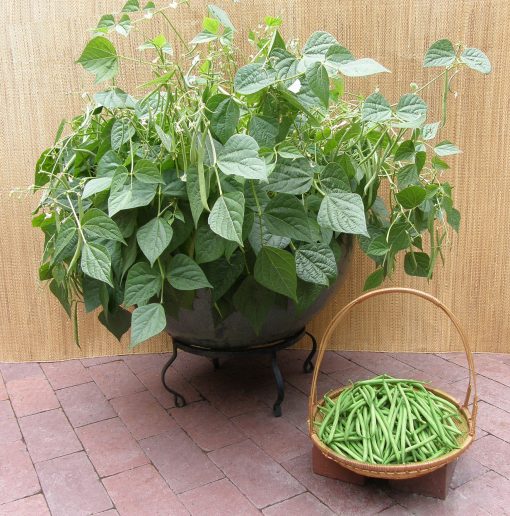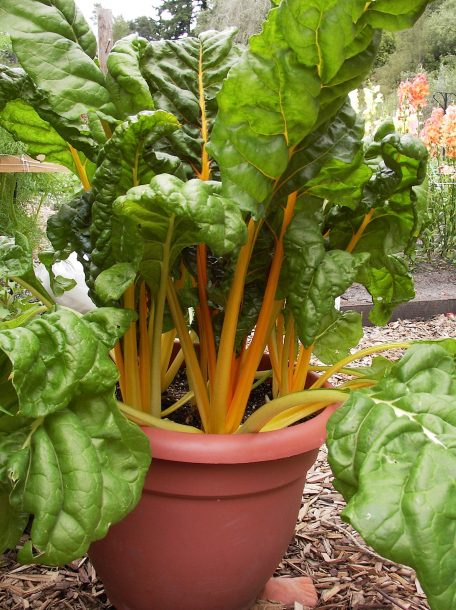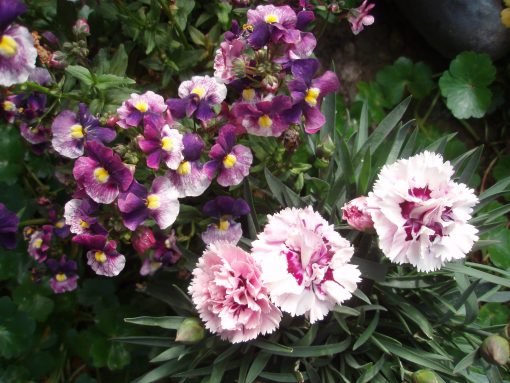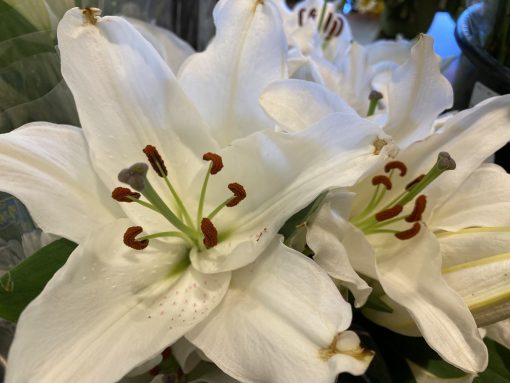
It seems to happen overnight. The dogwoods are blooming and they’re spectacular. You can’t miss hose huge bright white or pink bracts. I was pleased to see that the pink flowering dogwood on my old street in Bonny Doon has managed to bloom a bit despite surviving the fire and the lack of rainfall last year. Life can be tough. Nature is tougher.
Dogwood are a good tree choice for the allergy sufferer as their pollen is not wind borne. Their showy flowers, which are actually bracts, are pollinated by insects. Their pollen is large and heavy, sticking to insects rather than becoming airborne and leading to sneezing, runny noses and watery eyes.
There are four main species of dogwood trees. From the Himalayas in China comes cornus capitata. Korea is home to cornus kousa. Cornus florida is native to the east coast and the west coast is home to cornus nuttallii or the Western dogwood. I’m looking forward to enjoying our native dogwood bloom next month in Calaveras Big Trees State Park.
Our native Western dogwood is unfortunately prone to leaf spot fungal diseases when grown out of their range. They are a little temperamental in the garden before they reach the age of 10 years but after that they tolerate seasonal flooding and flower and grow with little care in morning sun or light shade.
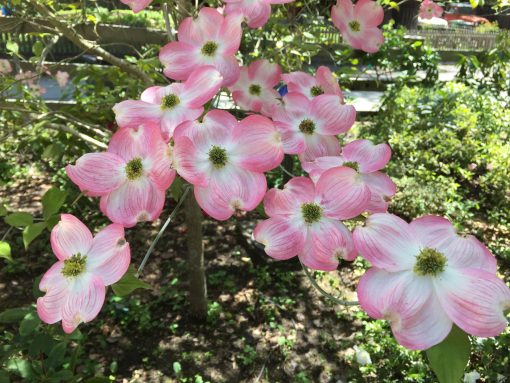
We are all familiar with the Eastern dogwood (cornus florida) that’s blooming now. With various shades of pink, red or white blossoms they are stunning. Take note that their root system is prone to disease if not grown with good drainage.
The Kousa dogwood is a more drought tolerant, disease resistant and a tougher plant all around. Large, showy flowers open after the tree has leafed out and remain for a long time. This makes it good for hybridizing with other varieties.
The Stella series is a mix of a florida on kousa dogwood rootstock. Vesuvius series is a cross of our native nuttallii with a florida as is Eddie’s White Wonder. There is also a nuttallii-kousa cross called Venus that displays huge flowers and gets its disease resistance from the kousa roots. All these cultivars strive to produce a tree with superior disease resistance and huge, long lasting blooms.
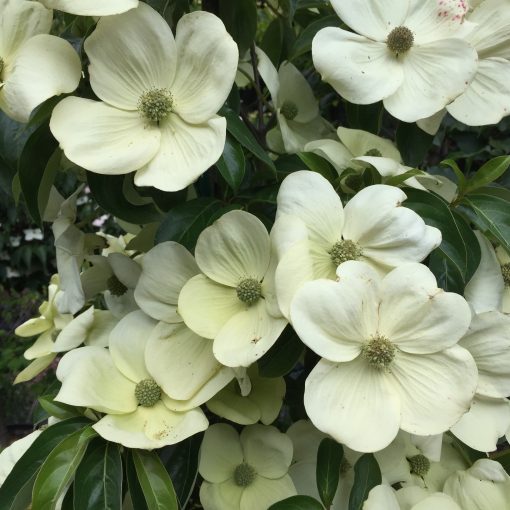
Deciduous dogwoods don’t like wet feet especially in the winter. That’s how they develop fungal disease. But there’s an evergreen dogwood that can handle moisture all year round. Cornus capitata Mountain Moon is a tough tree that can handle strong winds and isn’t bothered by any pests or diseases. They enjoy lots of organic matter as do all dogwoods. Huge flowers up to 6 inch wide can last from late spring into early summer. After flowering, the fruits begin to form and grow into red balls about the size of large strawberries. This is the reason is it also known as the Himalayan Strawberry Tree.
Dogwoods attract a variety of wildlife. All sorts of critters use this tree for food and shelter. The giant silk moth and several species of butterflies favor dogwoods as host plants. The spring flowers provide nectar to bees and other pollinating insects. Robin and sparrow are just two of the bird species that build nests on the horizontal branches and many others seek shelter in the leaves. The high calcium, high fat, fleshy red fruits are eaten by 35 species of birds including titmice, juncos and waxwings.
Many people think of dogwoods as an understory tree but this location is often too shady. Grow them in a full or partial sun location that gets afternoon shade after 4:00 PM. Add a couple of extra drip emitters or inline drip tubing to your irrigation system and they’ll be happy.

